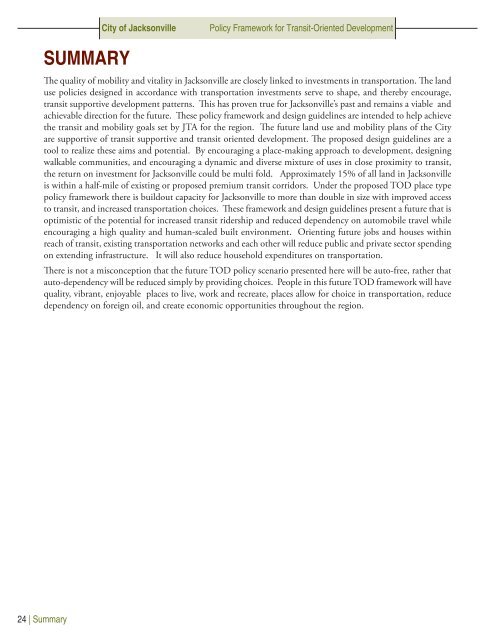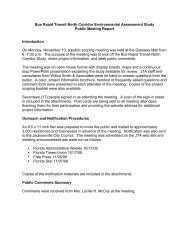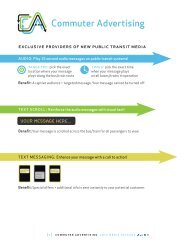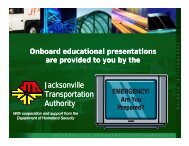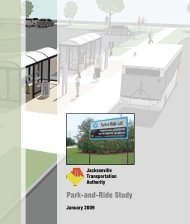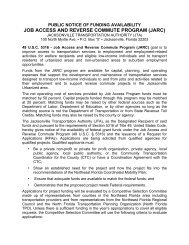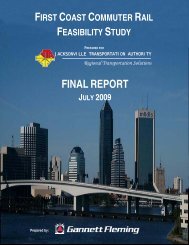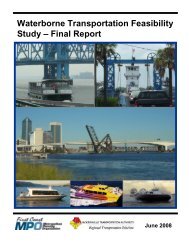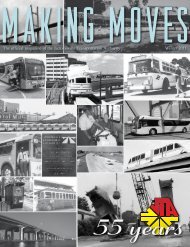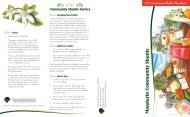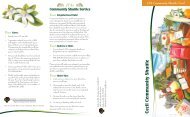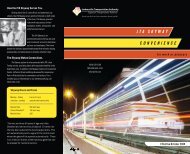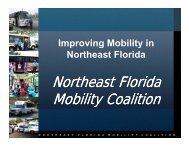Policy Framework - Jacksonville Transportation Authority
Policy Framework - Jacksonville Transportation Authority
Policy Framework - Jacksonville Transportation Authority
You also want an ePaper? Increase the reach of your titles
YUMPU automatically turns print PDFs into web optimized ePapers that Google loves.
City of <strong>Jacksonville</strong><br />
<strong>Policy</strong> <strong>Framework</strong> for Transit-Oriented Development<br />
Summary<br />
The quality of mobility and vitality in <strong>Jacksonville</strong> are closely linked to investments in transportation. The land<br />
use policies designed in accordance with transportation investments serve to shape, and thereby encourage,<br />
transit supportive development patterns. This has proven true for <strong>Jacksonville</strong>’s past and remains a viable and<br />
achievable direction for the future. These policy framework and design guidelines are intended to help achieve<br />
the transit and mobility goals set by JTA for the region. The future land use and mobility plans of the City<br />
are supportive of transit supportive and transit oriented development. The proposed design guidelines are a<br />
tool to realize these aims and potential. By encouraging a place-making approach to development, designing<br />
walkable communities, and encouraging a dynamic and diverse mixture of uses in close proximity to transit,<br />
the return on investment for <strong>Jacksonville</strong> could be multi fold. Approximately 15% of all land in <strong>Jacksonville</strong><br />
is within a half-mile of existing or proposed premium transit corridors. Under the proposed TOD place type<br />
policy framework there is buildout capacity for <strong>Jacksonville</strong> to more than double in size with improved access<br />
to transit, and increased transportation choices. These framework and design guidelines present a future that is<br />
optimistic of the potential for increased transit ridership and reduced dependency on automobile travel while<br />
encouraging a high quality and human-scaled built environment. Orienting future jobs and houses within<br />
reach of transit, existing transportation networks and each other will reduce public and private sector spending<br />
on extending infrastructure. It will also reduce household expenditures on transportation.<br />
There is not a misconception that the future TOD policy scenario presented here will be auto-free, rather that<br />
auto-dependency will be reduced simply by providing choices. People in this future TOD framework will have<br />
quality, vibrant, enjoyable places to live, work and recreate, places allow for choice in transportation, reduce<br />
dependency on foreign oil, and create economic opportunities throughout the region.<br />
24 | Summary<br />
Appendix A


